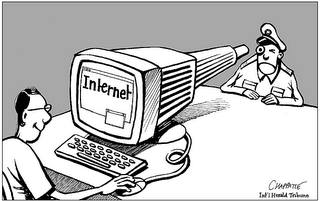Censor them with Content
Posted in The Gnovis Blog

Imagine the following scenario: You are a policy maker for a country with questionable leadership, and an even more questionable economy. A new technology called the Internet has emerged which might answer some of your economic concerns, but you are concerned about the unintended consequences of adopting a technology that might undermine your county’s sense of morality, not to mention nationalism.
This problem is not new, you saw the same threats emerged out of other media sources once they were able to syndicate content from across the world. But with newspaper, television and radio, the number of broadcasters was small enough that the appropriateness of content could be regulated. With the Internet, however, every media consumer is also a producer.
With a population of less than 5 million, these were the concerns of the Singaporean government when it implemented a complicated array of Internet censorship practices, but these concerns could equally be applied to the United States as well. The anxiety of nation-states about the border/culture/economically-agnostic nature of information on the Internet, and the desire to control information must always compete with the thick ideological armor with which we protect our digital free speech. The design of our Internet infrastructure is so imbued with the ideology of free speech that unrestricted access to information seems preordained for anyone who chooses to plug-in.
So how do you censor the individual? You launch MySpace.
The ideology of censorship is always one of omission. If Singapore can credit anything to its successful version of censorship it has been the incredible way in which the government has provided a rich supply of Internet content that undermines any connection between censorship and the absence of desired information.
That said, it is doubtful that the original objectives related to governance set out by the Singaporean government are achievable. The negative effects of media that result in riots and civil unrest are more closely tied to active, deindividuated, and frequently mobile communication seen with SMS, and not the types of passive media relationships and “information seeking” behavior that is most subject to censorship. While the dissemination of knowledge has been attributed to the Singaporean media outlets, Rheingold’s “Smart Mobs” have proven responsible for mass citizen action elsewhere in Asia.
So how does this related to MySpace? Singapore’s success has been granted based on its development of citizen resources. Or in other words, the Internet was assigned a purpose that its users could easily identify. The government is no longer the censor of information, but the provider of generous Internet enabled services. This sounds strikingly like the digital socializing effects we are seeing in the “free” world. What better way to control the use of a massive network that allows anyone to broadcast content than to setup a compulsory site that allows users to publish themselves in a structured and predefined manner? In this way, the governmentality and biopolitics of Singapore’s services seems quite similar to our beloved social networking sites.
